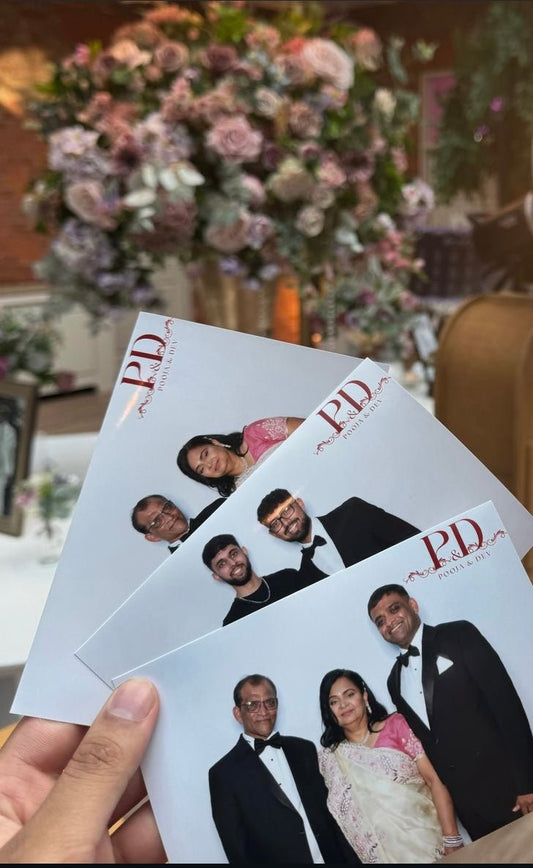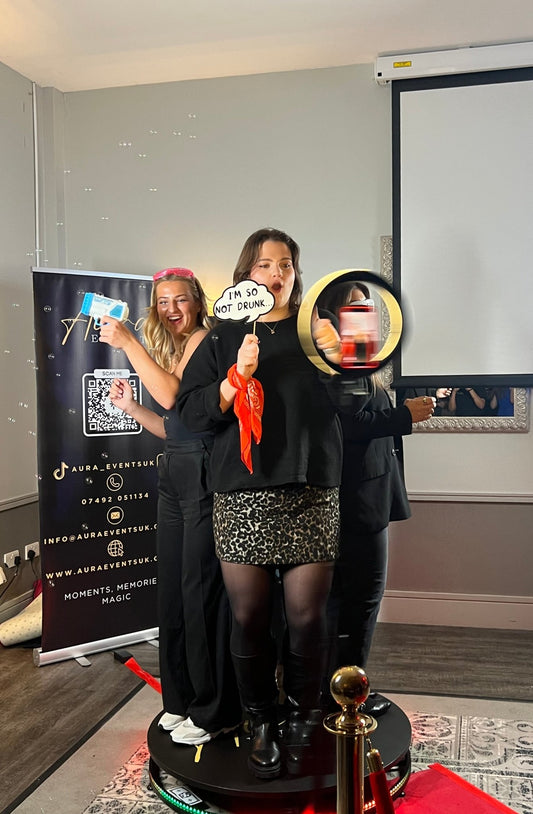Professional event planners are the driving force behind memorable shows, trade events, and corporate exhibitions. They manage every detail—from custom booth designs and digital print banners to coordinating vendors and meeting setup fees—ensuring that every event leaves a lasting impression. In this guide, we take you behind the scenes to explore a typical day in the life of a professional event planner. Drawing on data, facts, and expert advice, this article will show you how event planners use strategic planning, technology, and creative design ideas to impress clients and boost brand awareness.
According to Statista, the global events industry is projected to grow by 6–8% annually over the next five years, highlighting the importance of well-organized and innovative events. Additionally, research by EventMB indicates that 65% of event planners believe that interactive displays and custom designs are key to engaging potential customers. In this article, we will walk through a day in the life of an event planner, discuss how they manage trade show exhibits, and share tips from industry experts—all in simple English and based on factual, data-driven insights.
“Behind every successful event is a team that works tirelessly to coordinate details, manage budgets, and create an experience that resonates with the target audience.” – Event Experts UK
1. Early Morning: Setting the Stage
Starting the Day with Strategy
A professional event planner typically begins the day early, reviewing the agenda and checking emails. Mornings are often dedicated to planning and strategy sessions. Planners use digital tools and project management software to organize tasks, schedule meetings, and track budgets. For instance, many planners rely on spreadsheets and event management apps to monitor setup fees and vendor contracts, similar to how companies plan for custom trade show booths and exhibition booths.
Key Tasks in the Morning:
- Reviewing the Day’s Schedule: Planners go over the timeline, ensuring that every appointment—from venue walkthroughs to client meetings—is in order.
- Checking Emails and Updates: Communication is essential, so planners review emails from vendors, clients, and team members. They also check updates on social media channels where event ideas and free designs are shared.
- Analyzing Data: Planners look at recent data reports and analytics from previous events. According to Social Media Today, events that incorporate data-driven adjustments see a 30% improvement in overall engagement.
Prioritizing Tasks
The day’s agenda is structured around high-priority tasks such as vendor coordination and site visits. Planners set clear objectives for each meeting, whether discussing design ideas with a digital print provider or negotiating setup fees for trade show booths. By establishing clear goals, planners ensure that every action contributes to the event’s overall success.
2. Mid-Morning: Vendor Meetings and Site Visits
Coordinating with Vendors
A significant portion of an event planner’s day is spent interacting with vendors. These meetings are crucial for finalizing details related to catering, decor, technology, and transportation. Planners often discuss:
- Setup Fees and Contracts: Negotiating clear terms for booth setups, banner stands, and other services.
- Design and Customization: Reviewing free designs and digital print samples that will be used for logos, graphics, and promotional literature.
- Technology Integration: Ensuring that interactive displays and social media integrations are set up to engage visitors during the event.
For example, a meeting with a vendor specializing in custom trade show booths might cover topics such as the design of interactive displays, digital print quality, and installation timelines. According to Event Experts UK, clear communication with vendors reduces blackout tension during event setups and improves overall satisfaction by up to 35%.
Site Visits and Venue Checks
After vendor meetings, event planners often conduct site visits to inspect potential venues. A successful venue not only meets capacity and design needs but also supports sustainable practices and modern technology. During these visits, planners look for:
- Space and Layout: Ensuring there is enough space for booths, interactive displays, and designated areas for trade show exhibits.
- Lighting and Acoustics: Assessing whether the venue can support modern LED lighting systems and high-quality audio-visual equipment.
- Accessibility and Location: Verifying that the venue is easily accessible to attendees, which is especially important for events expecting potential customers and clients from different regions.
A survey by VenueFinder found that 68% of event planners believe that a venue’s layout flexibility and built-in technological support are essential for creating a lasting impression on attendees. Planners often use these data points to compare venues and make an informed decision.
3. Lunch: Time for Reflection and Quick Meetings
A Brief Pause in the Day
Lunchtime offers a welcome break for event planners to reflect on the progress of the day and adjust their plans if needed. It is also an opportunity to hold quick meetings with team members or vendors. Planners may use this time to:
- Review Notes: Analyze notes from the morning meetings and site visits.
- Discuss Challenges: Address any issues such as unexpected setup fees or delays in design production.
- Plan the Afternoon: Outline the remaining tasks for the day and confirm appointments for later meetings.
According to research by the Trade Show Institute, event planners who take brief, structured breaks are 25% more effective in managing their schedules and reducing stress levels. These moments of reflection help ensure that the planner remains focused and adaptable throughout the day.
Networking Over Lunch
Often, lunch is not just a time to eat but also an opportunity to network. Event planners may meet with industry experts or potential clients to discuss new products, design ideas, and innovative solutions for upcoming events. These informal interactions can spark creative ideas and help build long-term relationships that benefit future projects.
4. Early Afternoon: Planning and Creative Sessions
Brainstorming and Strategy Meetings
The early afternoon is typically reserved for brainstorming sessions and detailed planning meetings. During this time, event planners work with their teams to finalize creative concepts and ensure that all elements of the event align with the brand message. Key topics often include:
- Design and Decor: Discussing options for custom trade show displays, exhibition booths, and interactive setups. Planners may review digital print samples and free design templates to ensure a cohesive look.
- Timeline Adjustments: Revisiting the event timeline to incorporate any changes from the morning meetings. This includes coordinating vendor arrival times, setup schedules, and rehearsal times.
- Budget Revisions: Evaluating the budget in light of new vendor quotes or unexpected expenses. Planners use data from previous events to make informed decisions about cost management.
According to EventMB, events that involve collaborative brainstorming and regular strategy meetings see a 30% improvement in overall execution. The creative session is where the vision for the event is refined and where design ideas transform into actionable plans.
The Role of Technology in Creative Planning
Modern event planners rely heavily on technology to facilitate creative sessions. Digital whiteboards, online collaboration tools, and project management software allow teams to share ideas in real time. For instance:
- Digital Print and Free Designs: Using digital tools to quickly generate and modify design ideas for banners, logos, and promotional literature.
- Interactive Displays: Incorporating concepts for interactive displays that will engage attendees and create a memorable first impression.
- Social Media Strategy: Planning how to integrate social media into the event, including live updates and interactive social media walls.
These technological tools are essential for staying organized and ensuring that every design element—whether for a trade show booth or a corporate exhibit—is executed flawlessly.
5. Mid-Afternoon: Client Meetings and Finalizing Details
Presenting Proposals to Clients
In the mid-afternoon, event planners often meet with clients to present proposals and update them on the progress of the event planning. These meetings are crucial for securing client approval and ensuring that the event aligns with their expectations. During these sessions, planners may:
- Showcase Design Concepts: Present custom designs, digital print samples, and layout ideas that reflect the client’s brand message.
- Discuss Budget and ROI: Outline how the budget is being allocated, including venue costs, setup fees for trade show displays, and costs associated with interactive displays and digital print materials.
- Review the Timeline: Provide a detailed timeline that covers all aspects of the event—from initial setup to the final teardown.
- Address Questions: Answer any questions the client may have regarding vendor coordination, sustainability practices, or logistics.
A survey by Event Experts UK found that 78% of clients place high importance on clear communication and detailed proposals. This transparency helps build trust and ensures that the event will meet or exceed expectations.
Using Data to Support Decisions
During client meetings, planners often refer to data and case studies to justify their recommendations. For example, they might cite:
- Industry Reports: Data from Statista and EventMB showing trends in interactive displays and custom trade show booths.
- Cost Analysis: Detailed comparisons of setup fees, digital print costs, and vendor pricing from previous events.
- Feedback Metrics: Post-event survey results that demonstrate increased brand awareness and higher client satisfaction when certain strategies are employed.
By using data-driven insights, event planners can clearly articulate the benefits of their approach and secure the client’s confidence in their plan.
6. Late Afternoon: Coordination, Follow-Ups, and Adjustments
Internal Team Meetings
As the day winds down, event planners often hold internal team meetings to review the day’s progress and prepare for the next steps. These meetings focus on:
- Status Updates: Each team member provides an update on their assigned tasks, from vendor follow-ups to finalizing design elements.
- Problem-Solving: Discussing any issues that arose during the day and brainstorming solutions. For instance, if there was a delay in receiving digital print samples, the team might discuss alternatives or negotiate new setup fees.
- Next-Day Planning: Outlining the tasks for the next day, including further site visits, additional client meetings, or finalizing promotional literature.
A study by the Trade Show Institute indicates that teams that conduct regular internal meetings experience a 25% improvement in project completion rates and a reduction in last-minute issues.
Follow-Up Communications
In addition to team meetings, the late afternoon is when planners send out follow-up emails to vendors, clients, and partners. These communications help ensure that all details are confirmed and that any pending issues are addressed promptly. Key follow-up actions include:
- Confirming Appointments: Reconfirming site visits, vendor deliveries, and client meetings scheduled for the following day.
- Sharing Updates: Sending out digital print updates, revised proposals, or detailed schedules to all stakeholders.
- Documenting Decisions: Keeping a record of decisions made during the day to maintain transparency and continuity.
Using digital tools for follow-up communication helps streamline the process and ensures that nothing is overlooked.
7. Evening Wrap-Up: Reflecting on the Day
Reviewing the Day’s Achievements
As the workday comes to a close, professional event planners take time to reflect on what has been accomplished. This involves reviewing the day’s activities, assessing progress against the event timeline, and making note of any adjustments that need to be made. Key reflection points include:
- Successes and Challenges: Documenting what went well (such as securing a new vendor contract with competitive setup fees) and noting areas where there is room for improvement.
- Data and Feedback: Reviewing preliminary data, such as vendor response times and client feedback, which can be used to inform future decisions.
- Planning Adjustments: Updating the project management system with any changes to the schedule, budget, or design plans.
According to research by EventMB, event planners who review and document their daily progress experience a 20% higher success rate in meeting overall project goals.
Personal Time and Continued Learning
Even as the professional day ends, many event planners use the evening for personal development. This may involve:
- Industry Reading: Keeping up with the latest trends in trade show displays, digital print, and sustainable event practices. Websites like PrintWeek and Social Media Today offer valuable insights and free design ideas.
- Networking Online: Engaging on social media platforms and professional networks such as LinkedIn to exchange ideas and learn from fellow event experts.
- Planning for Tomorrow: Jotting down ideas and thoughts for improving future events. This habit ensures continuous improvement and innovation in event planning.
8. The Role of Trade Shows and Exhibitions
Many professional event planners also work on trade shows and exhibitions, where the stakes are high and every detail counts. Trade shows require a high level of coordination and creativity—qualities that are also essential for corporate events and product launches.
Key Responsibilities in Trade Shows
- Custom Trade Show Booths: Planners design and coordinate the setup of custom trade show booths that incorporate digital print banners, interactive displays, and eye-catching graphics. These booths are designed to attract potential customers and convey a strong brand message.
- Vendor and Setup Coordination: Just as in corporate events, trade show setups involve negotiating setup fees, coordinating with vendors, and ensuring that every element—from banner stands to free design materials—is perfectly aligned.
- Client Engagement: During trade shows, event planners are often on the front lines, interacting with visitors, gathering feedback, and making adjustments in real time. This direct interaction can lead to valuable insights that improve future events.
- Data Collection: Planners collect data on visitor engagement, dwell time at booths, and overall satisfaction. This data helps them refine design ideas and enhance the overall trade show exhibit experience.
A survey by the Trade Show Institute indicates that events with well-designed and interactive trade show booths can see up to a 50% increase in visitor engagement. This data reinforces the importance of detailed planning and technology integration in every facet of event planning.
9. The Impact of Digital Print and Interactive Displays
Technology plays a pivotal role in modern event planning. Digital print and interactive displays are among the most popular tools used by event planners to create engaging and memorable experiences.
Digital Print Solutions
- Efficiency and Quality: Digital print solutions offer high-quality graphics for banners, logos, and promotional literature. They also reduce the need for traditional print methods, which can save on setup fees and minimize waste.
- Flexibility: Digital print allows for quick adjustments. If a design needs to be updated or if the brand message changes, digital print materials can be modified rapidly, ensuring that every display—whether in a trade show booth or an exhibition space—remains current.
- Cost Savings: By reducing printing waste and offering free design templates, digital print solutions can lower overall costs and contribute to more sustainable event practices.
Interactive Displays
- Engaging Experiences: Interactive displays, such as touch-screen kiosks and digital photo booths, enhance attendee engagement. Studies by Event MB show that events using interactive displays can boost engagement by up to 50%.
- Brand Messaging: These displays help convey the brand message in a dynamic way, making a great first impression and leaving a lasting impact on visitors.
- Versatility: Interactive displays can be used for various purposes, from displaying event schedules to gathering live social media feedback, ensuring that attendees have access to real-time information.
The integration of digital print and interactive displays is a common thread in successful event planning, whether for corporate gatherings, trade shows, or exhibitions. These technologies not only streamline operations but also elevate the overall attendee experience.
10. Conclusion: The Art and Science of Event Planning
A day in the life of a professional event planner is a blend of creativity, coordination, and constant problem-solving. From early morning strategy sessions and vendor meetings to site visits, client presentations, and final wrap-ups, every moment is meticulously planned and executed. The integration of technology—from digital print to interactive displays—plays a significant role in ensuring that each event is both memorable and efficient.
Key takeaways from a day in the life of an event planner include:
- Early Preparation: A well-structured morning sets the tone for the entire day. Using digital tools and reviewing data helps prioritize tasks.
- Vendor and Venue Coordination: Regular meetings and site visits are essential for ensuring that every detail—whether it is a trade show booth, banner stand, or custom design—meets the event’s high standards.
- Creative and Data-Driven Planning: Incorporating free design ideas, digital print materials, and interactive displays not only reduces costs but also creates engaging, modern experiences.
- Continuous Improvement: Post-event analysis and team reflections ensure that each event is a learning experience that contributes to future success.
- Balancing Creativity and Logistics: The role of an event planner is to blend creative ideas with logistical precision. This balance is what transforms a simple gathering into a memorable experience that boosts brand awareness and leaves a lasting impression.
Data and industry research consistently show that well-planned events lead to higher client satisfaction, increased visitor engagement, and improved ROI. Whether planning a corporate conference, a trade show exhibit, or a product launch, professional event planners rely on a mix of technology, strategic planning, and creative design to deliver exceptional experiences.
As you consider your next event, remember that the success lies in the details. From managing setup fees and vendor contracts to selecting the perfect venue and incorporating modern design elements, every decision contributes to the final experience. By taking a behind-the-scenes look at a day in the life of a professional event planner, you gain insight into the art and science of creating events that impress clients, engage attendees, and uphold your brand message.
The event planning process is complex, data-driven, and continuously evolving. Embrace the journey, learn from every challenge, and use the strategies outlined in this guide to create events that not only meet but exceed expectations.


